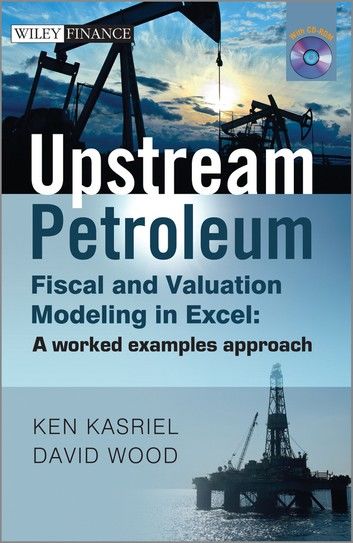| FindBook |
有 1 項符合
Upstream Petroleum Fiscal and Valuation Modeling in Excel的圖書 |
 |
Upstream Petroleum Fiscal and Valuation Modeling in Excel 作者:Ken Kasriel,David Wood 出版社:Wiley 出版日期:2013-06-06 語言:英文 |
| 圖書館借閱 |
| 國家圖書館 | 全國圖書書目資訊網 | 國立公共資訊圖書館 | 電子書服務平台 | MetaCat 跨館整合查詢 |
| 臺北市立圖書館 | 新北市立圖書館 | 基隆市公共圖書館 | 桃園市立圖書館 | 新竹縣公共圖書館 |
| 苗栗縣立圖書館 | 臺中市立圖書館 | 彰化縣公共圖書館 | 南投縣文化局 | 雲林縣公共圖書館 |
| 嘉義縣圖書館 | 臺南市立圖書館 | 高雄市立圖書館 | 屏東縣公共圖書館 | 宜蘭縣公共圖書館 |
| 花蓮縣文化局 | 臺東縣文化處 |
|
|
Please contact the authors at upstream.petroleum.in.excel@gmail.com for details of how to access the trial version of Crystal Ball, as well as the Excel and other files which are *not* part of the e-book version download.
"This is a book no deal team should be without. It is a must for those involved in upstream oil and gas transactions, planning, budgeting, investment appraisal and portfolio management. Its step–by–step approach cuts through complexity, making it comprehensive and understandable by a wide range of users with a wide range of abilities. It can be used as a textbook, an introductory primer or as a handbook that you can dip in and out of or read cover to cover."
—Michael Lynch–Bell, Senior Advisor, Oil & Gas, Ernst & Young LLP; ex-officio Chairman, UN Expert Group on Resource Classification
In the upstream petroleum industry, it is the value of post–tax cashflows which matters most to companies, governments, investors, lenders, analysts, and advisors. Calculating these cashflows and understanding their “behavior,” however, is challenging, as the industry’s specialized fiscal systems can be complex, jargon–laden, and sometimes seem to be a “world of their own”.
Upstream Petroleum Fiscal and Valuation Modeling in Excel: A Worked Examples Approach demystifies fiscal analysis which, unlike disciplines such as Earth sciences and engineering, can be learned from a book. Written in plain English for laymen and for experienced practitioners alike, it is a reader–friendly, clear, practical, step–by–step hands–on guide for both reference and self–paced study.
The book does not catalogue the 100+ different petroleum fiscal regimes in use at the time of writing. Rather, drawing on the authors’ combined 48 years’ experience, it takes a more timeless, generic treatment, by covering the most common variants of royalties, taxation, production sharing arrangements, bonuses and abandonment funding , through a dual approach: first, showing how to model them in Excel , and then providing interactive exercises to prompt (and answer) questions that analyze impacts on cashflows.
In addition to the main text, the book consists of over 120 Excel files (ranging from modular examples to full models) in Excel 2007 and 2003 formats; over 400 pages of supplementary PDF files; VBA features to enhance model functionality; and an introduction to risk modeling with exercises for the included trial version of Oracle’s Crystal Ball software. It offers both a wealth of content and models equal to or surpassing what is available from fiscal modeling courses costing several times more; and greater insights into underlying calculations than commercially available “black box” fiscal software.
New US Securities and Exchange Commission (SEC) rules planned for 2013 will force petroleum companies to disclose more fiscal information on an individual country basis. This will make it more important than ever for analysts to understand how to model oil and gas terms and the potential impacts of the disclosed government payments on future oil and gas company profitability.
Due to the heavy use of graphics and cross references used in this particular text, some readers might find that the printed book offers a more optimal reading experience than certain e-formats particularly with the Kindle eMobi format.
* *
|











